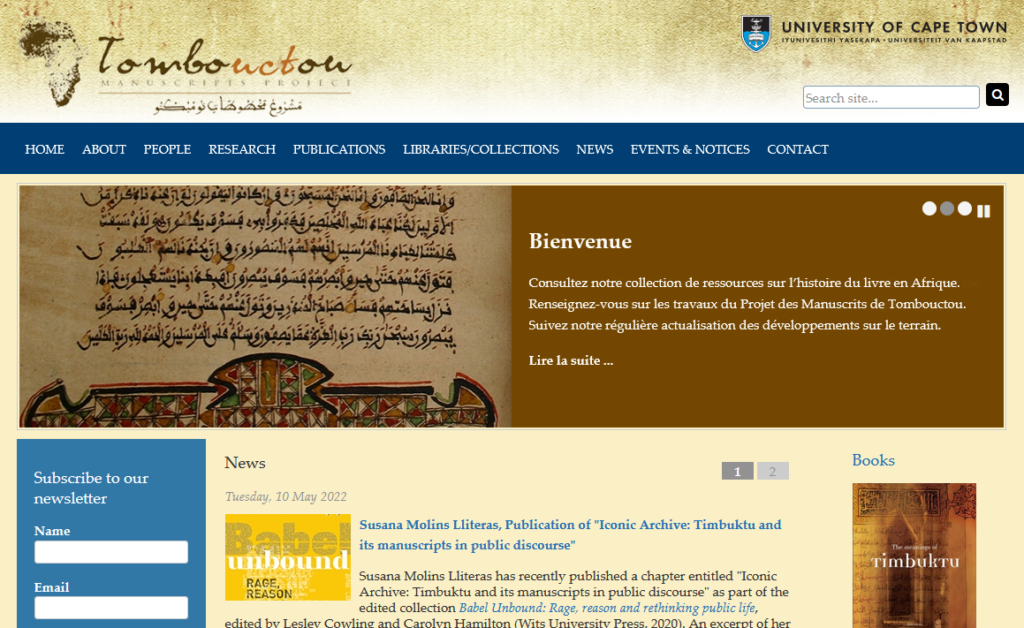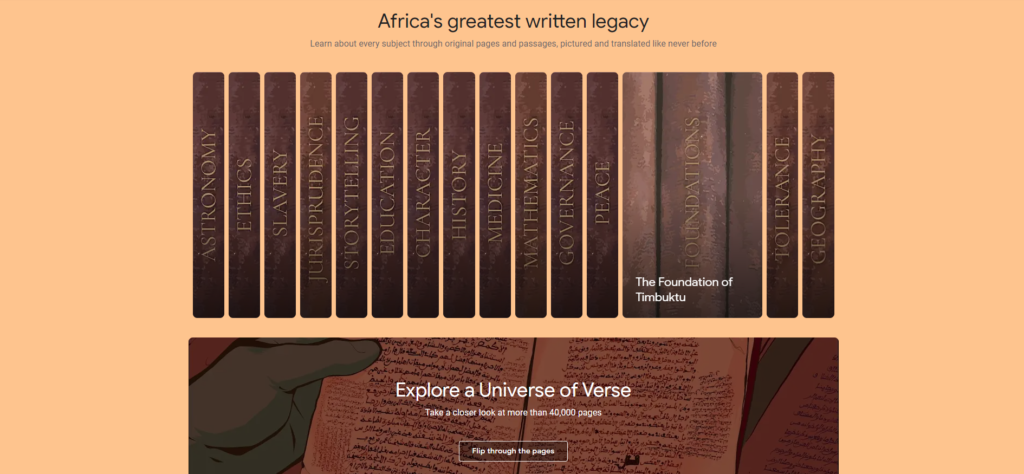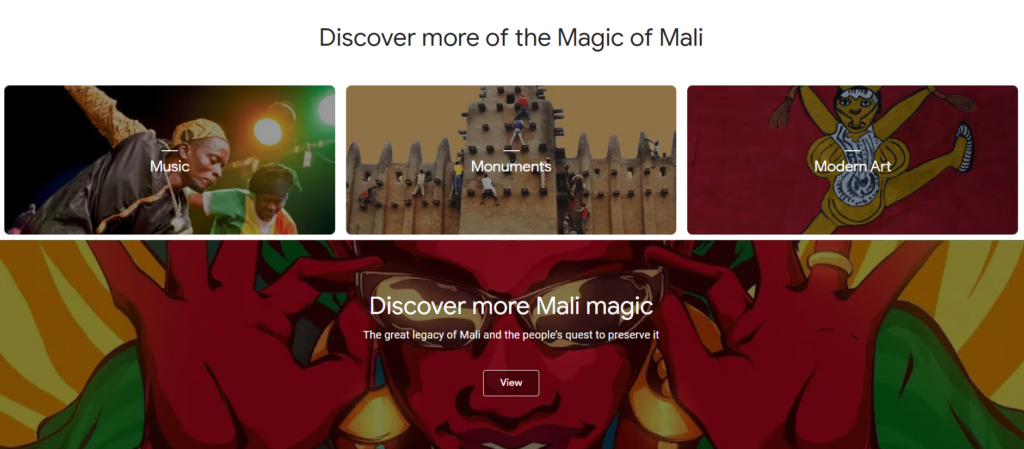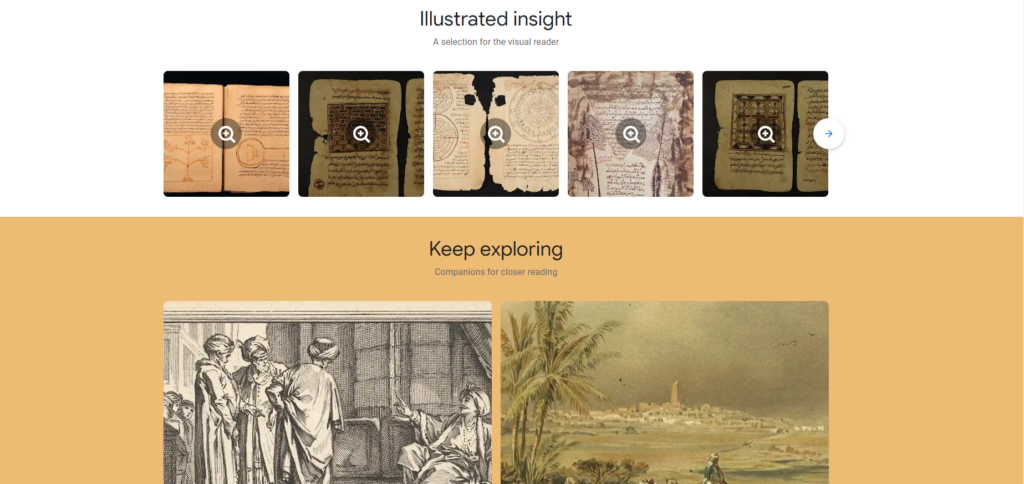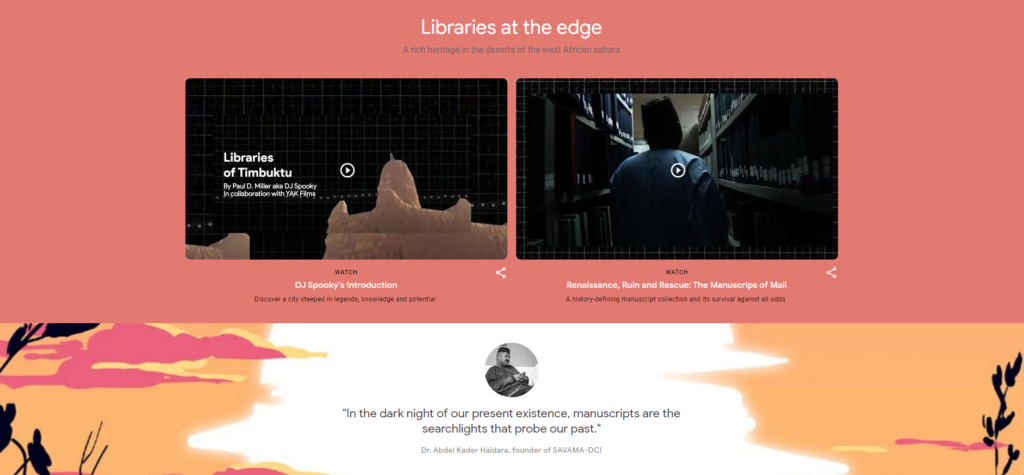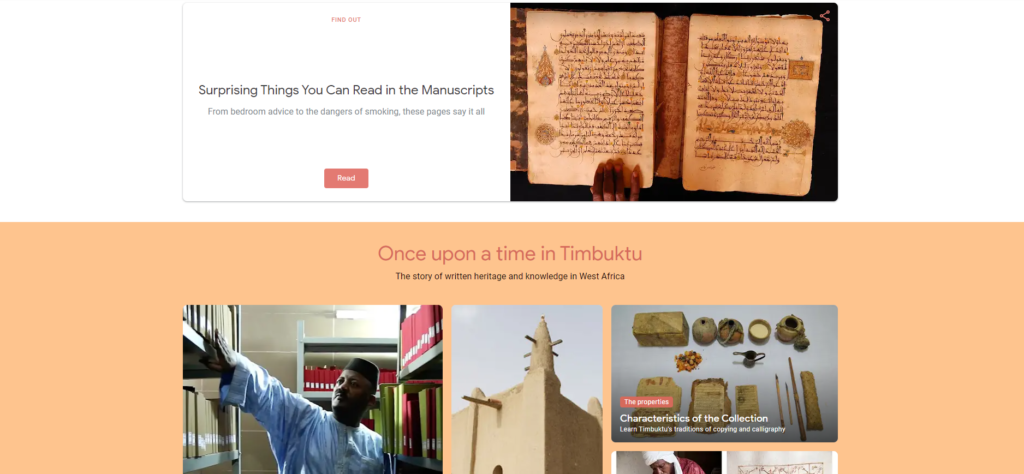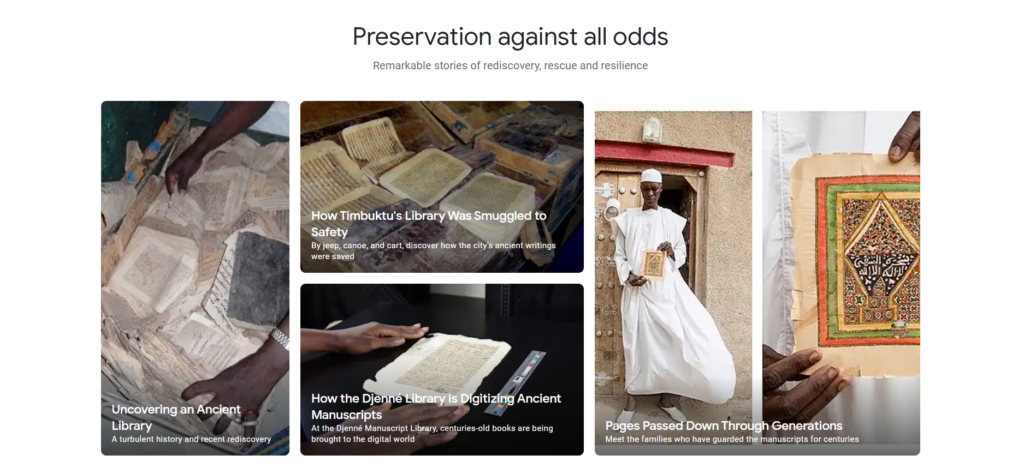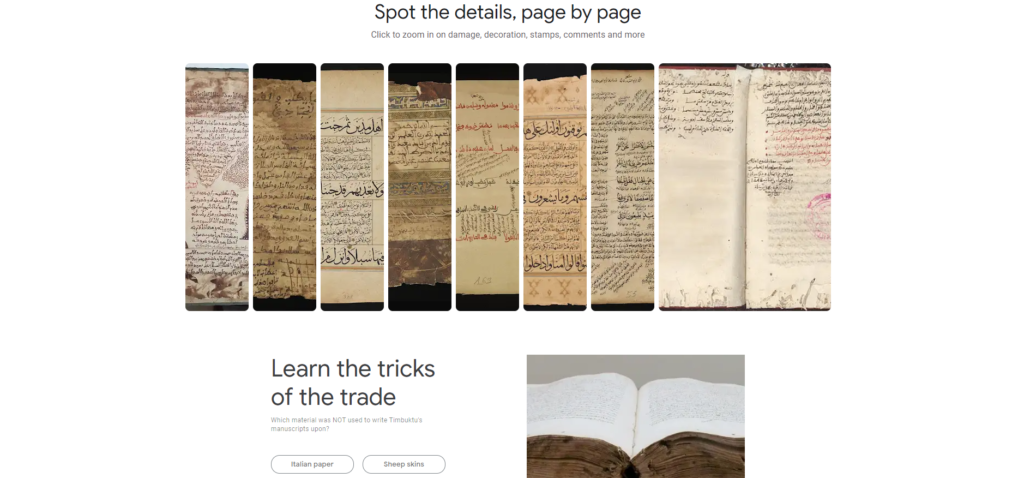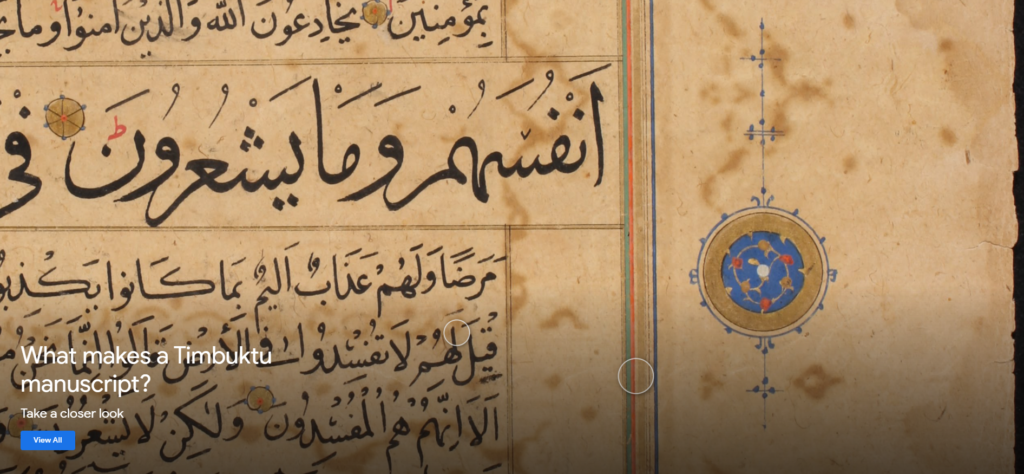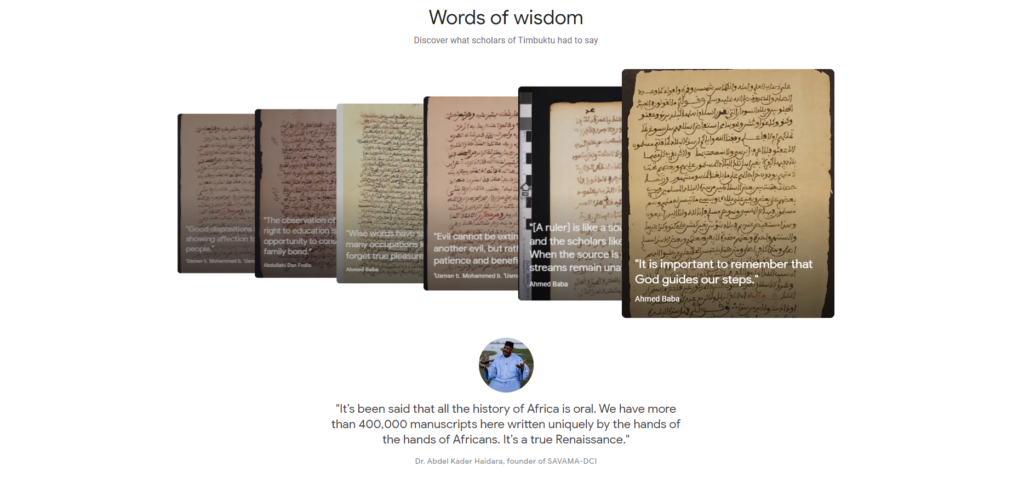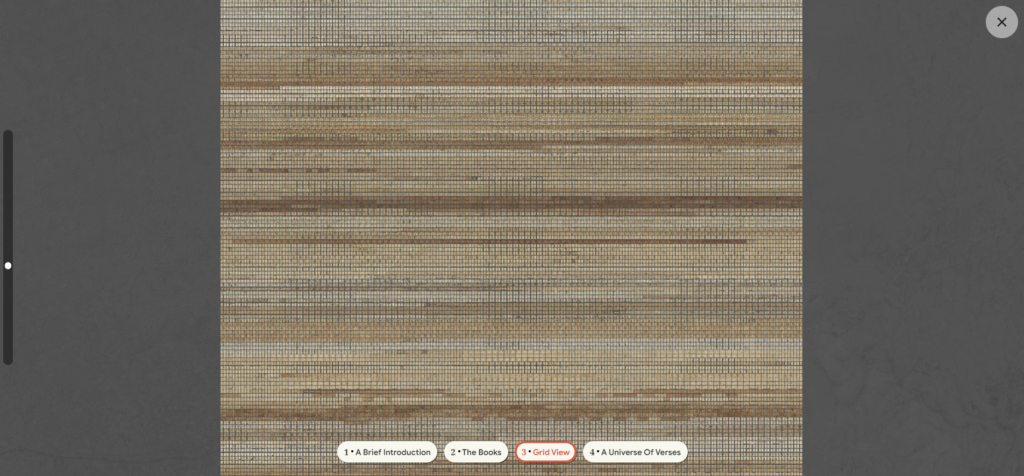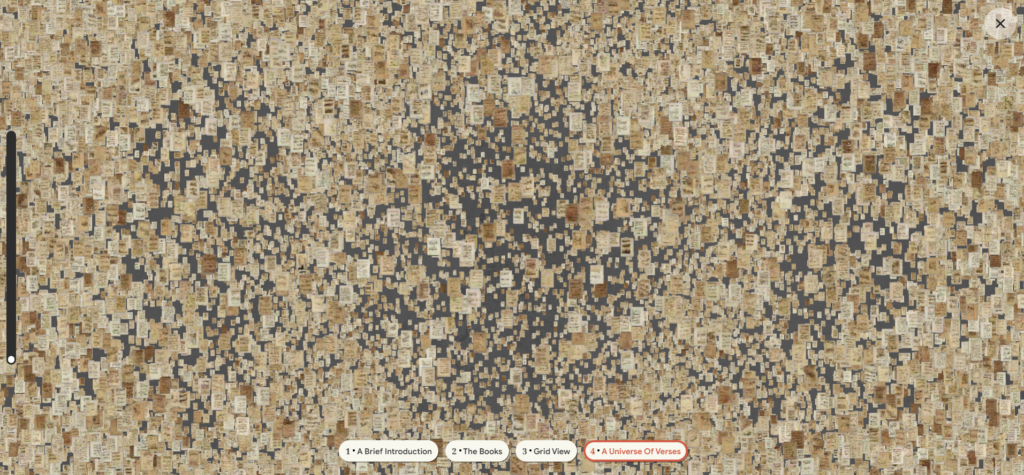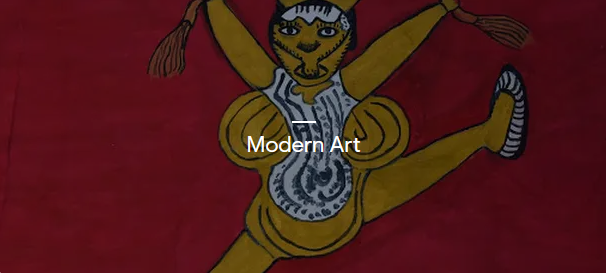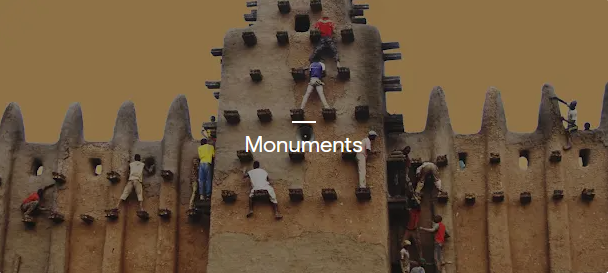The Timbuktu Manuscripts: discover a trove of Timbuktu’s ancient manuscripts digital exhibition and collection is the result of a collaboration between a Malian association called SAVAMA-DCI whose main goal is to preserve and make widely available Arabic manuscripts from Timbuktu and Google Arts & Culture.
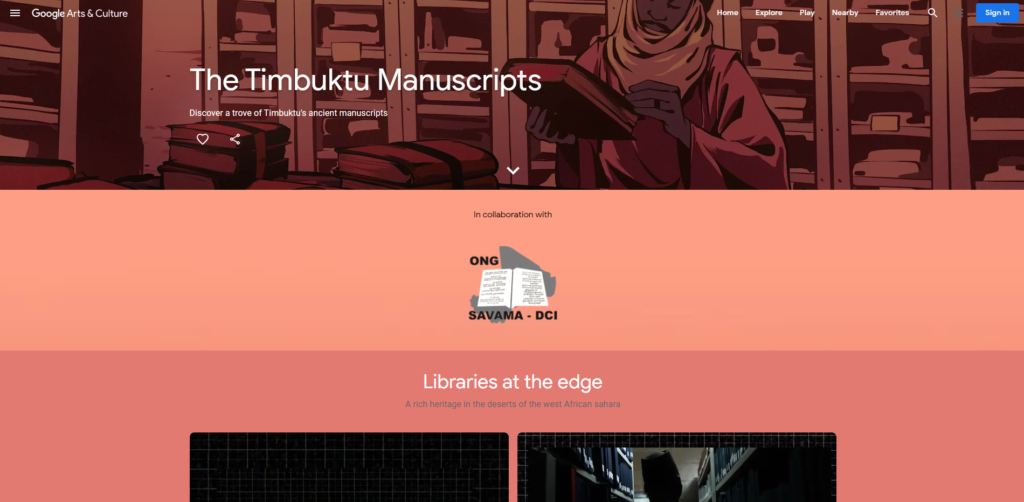
Back in 1973, a preservation campaign of the Timbuktu’s collection made of approximately 400,000 codices was initiated by the Ahmed Baba Center (CEDRAB). In 1996, the newly founded association SAVAMA-DCI started raising awareness among private owners about the value of their family manuscripts, providing technical and financial support for the processing and conservation of these materials, and encouraging them to keep the manuscripts in their possession. If funding was limited at first, the association was over time able to collect enough funds to ensure the preservation and inventory of the collections. In 2012, with the jihadist occupation of Northern Mali, the fear that manuscripts would be destroyed lead to the transfer of Timbuktu’s manuscripts collections to other towns in the region like Bamako. According to SAMAVA-DCI over 370.000 codices were rescued.
« Dans la nuit noire de notre existence, les manuscrits sont les projecteurs qui éclairent le passé. »
Dr. Abdel Kader Haidara, fondateur de SAVAMA-DCI
The Timbuktu Manuscripts virtual exhibition is incredibly rich (more than 40.000 manuscripts from libraries and private collections) and provides many options to learn about the collections, their history, and the rescue and preservation processes.
The website includes:
- shorts videos documenting the manuscripts’ preservation
- pictures documenting the rescue operations, and the digitization of manuscripts
- topical sub-collections of digitized manuscripts (astronomy, ethics, jurisprudence, mathematics, medicine, geography, etc.)
- general information about the Arabic manuscripts tradition with a focus on the African tradition
- detailed descriptions of the collections composing The Timbuktu Manuscripts collection
- historical and literary information situating these manuscripts in the larger context of knowledge production and dissemination in Africa and beyond.
The most incredible experience offered via this virtual exhibition is the digital archives of the Timbuktu Manuscripts:
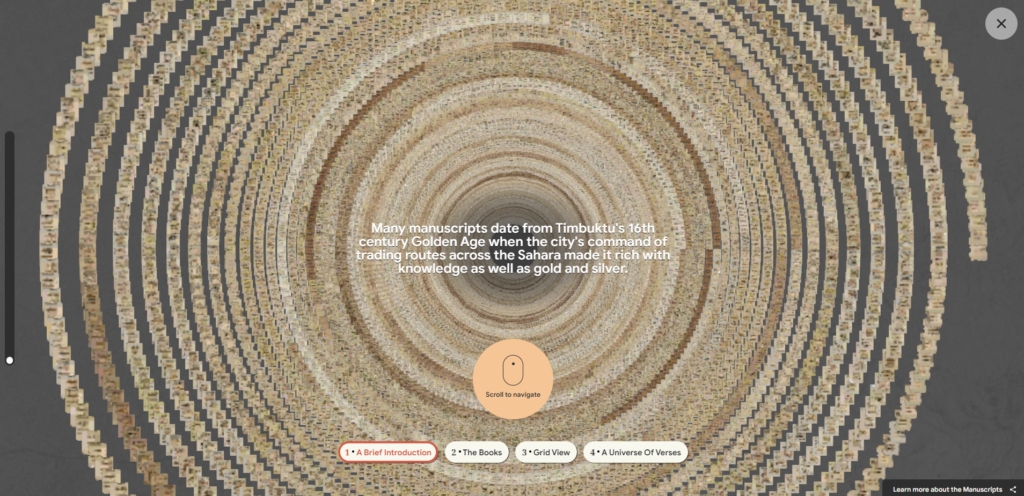
The archives includes more than 400,000 handwritten pages from the Qur’an, mathematical, astronomical and medical treatises, sex and black magic manuals, etc. dating from the 11th to the 20th century. A selection of manuscripts are accessible full-text from section 2. The Books. Section 3. Grid View allows to glance at individual pages displayed in a table view when section 4. A Universe of Verses gives access to individual pages in what appears like a much less organized display:
At the very bottom of the main page, The Timbuktu Manuscripts virtual exhibition links to other Google Arts & Culture projects to learn more about Malian music, modern art, architectural heritage, etc.
The Timbuktu Manuscripts website will default to the language of your Google Account. But the interface is accessible in any language available in Google (although some content may not translate).
And for those eager to learn more about the Timbuktu manuscripts, we suggest they go visit the Tombouctou Manuscripts Project website. This project focusing on the “content of the manuscripts, the circulation of scholars and ideas, the economy of the manuscript book, and other aspects of the “work of scholarship” in Timbuktu” was established in 2003 by an Associate Professor at the University of Cape Town (South Africa) and remains very active.
